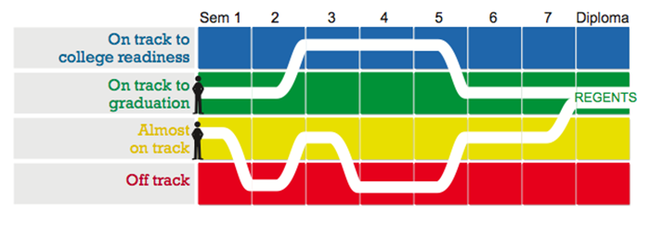We Are Serious About Systems
At New Visions, we are serious about systems. Mark Dunetz explains why they are non-negotiable in his blog post here.
Effective systems (e.g. attendance, scheduling programming, academic interventions) reinforce the vulnerabilities that are inherent to the design of schools. For example, a potent attendance system counteracts the porousness of a typical school day. Within a single day, a student moves throughout the school going from one class to another. That’s potentially eight opportunities to slip out of school unnoticed. An attendance system tracks a student between classes and it tracks a student from one day to the next.
This is what we mean by not letting kids fall through the cracks – even the hairline cracks. But you can’t do much about that crack if you don’t see it or if you think it’s too insignificant to matter.
The only way an attendance system is going to...

